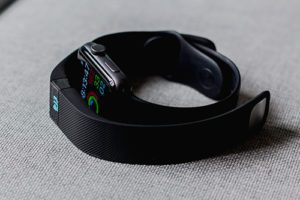
[Image from unsplash.com]
UT Southwestern’s Simmons Cancer Center conducted study of older cancer patients who were willing to wear physical activity monitors (PAMs) for 10 weeks or more. The researchers gathered data from the PAMs and the data correlated well with a clinicians assessment of patient status.
“This is the first step in understanding how relevant wearable devices are for cancer patients. My hope its hat we can use wearable devices in large cancer clinical trials. That way, we can see what the true effect of different cancer treatments are on patients’ physical activity,” Muhammad Beg, senior author on the study, said.
A patient’s functional status is an important part of clinical encounters and can affect how a patient will be treated. Since cancer patients are generally older, differences in functional status are important in evaluating older patients. Data from PAMs can fine-tune an oncologist’s patient assessment.
“We found that patients could successfully use the wearable devices over a prolonged period. Measured steps per day differentiated performance status with great sensitivity and correlated well with multiple quality-of-life surveys,” Arjun Gupta, first author of the study, said. “Importantly, the attrition rate was low and patients reported a positive experience with using the device, indicating that these new-generation wearables are adoptable even in cancer patients why may be elderly and less technologically literate.”
The study evaluated the data of 24 patients who were being treated for different cancers including breast, lung and gastrointestinal. Of those patients, 23 met the goal set for feasibility for using PAMs.
The study was published in the Journal of Clinical Oncology: Clinical Cancer Informatics and was funded by an NCI Cancer Center Support Grant and Dedman Family Scholar in Clinical Care.



